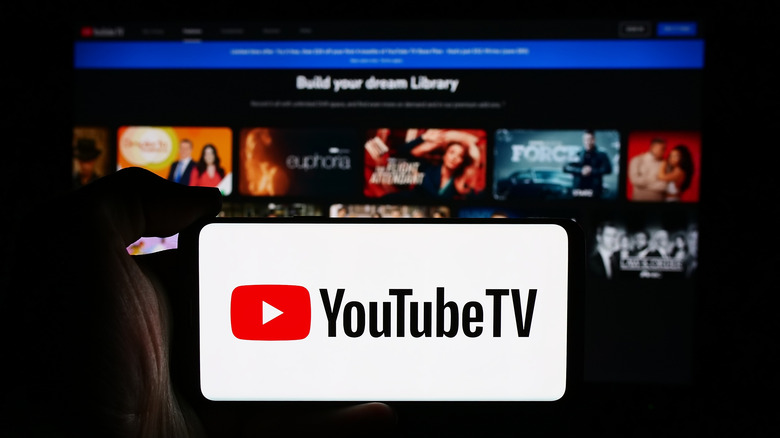What Does It Mean On YouTube TV When It Says 'Streaming Limit Reached?'
It starts innocently enough. You fire up YouTube TV to catch the game, binge a true-crime doc, or maybe just unwind with some background noise while you cook. But instead of your go-to channel, you get a jarring notification: "Streaming Limit Reached." No show. No context. Just a digital door slammed in your face. It's frustrating, yes, but thankfully, it's also a really simple issue to fix once you know what's going on.
At its core, this message is YouTube TV's way of telling you that someone else (or two someone elses) got there first. YouTube TV allows you to create up to six individual profiles under one account, but those are just for personalization — DVR libraries, watch history, and recommendations. They don't give you six simultaneous streams.The actual limit is three devices streaming at once, no matter how many profiles are on the account. If three streams are already running, anyone else trying to watch gets blocked by that "streaming limit" warning. Let's get into the fine print, and then walk you through how to get around the restriction.
What triggers the Streaming Limit?
Three streams means three total devices — but what counts as a device might surprise you. YouTube TV doesn't just tally screens in use. It counts any active session logged into your account within your household, whether it's a smart TV, a phone, a laptop browser, or even a Chromecast or Apple TV cast. If it's pulling a feed, it's using up a slot.
And "your household" isn't just whoever shares your account. It's defined by the home network — specifically, the Wi-Fi you connect to most often, typically where your main TV lives. Once you set that upon sign-up, YouTube TV uses it as the anchor point. Every device streaming on that network gets grouped under your household and counts toward your three-device limit. So if the living room TV, your phone, and a tablet in the bedroom are all pulling a stream from that same Wi-Fi, that's your quota. Add a fourth, and you'll hit the wall.
And here's where it can get tricky. Sometimes, devices stay "active" even after you stop watching. A paused movie, an app left open, or even background streaming can silently hog a slot. So if you're staring down the "streaming limit reached" message and everyone swears they're not watching anything, chances are there's a phantom stream running somewhere.
How to fix YouTubeTV's Streaming Limit (and avoid it next time)
There are a few ways to make YouTube TV's streaming limit alert go away. First, check all your devices and close out any forgotten streams, or log out wherever needed. Maybe ping the group chat to make sure no one's watching on multiple devices. A simple reboot can also help close any background streams. If hitting the cap is a regular headache — say your house is a five-screen circus —consider ponying up for the 4K Plus add-on. You get unlimited in-home streams and the standard three streams when you're away, plus perks like higher resolution and offline viewing.
Next, make sure your device is connected to your set home network. On your TV, head to Settings > Streaming Limits — you're good if it says "Connected to home network." You can update that network up to three times a month (handy if you have two residences or switch routers), but only within your designated home area. If you've moved, you'll need to update your home area in your account first. Just note: only the account owner — the "family manager" — can make those changes.
YouTube TV frowns on sharing your login with people outside your household, so streaming from unregistered locations can trigger verification checks or even account flags. And it's not just YouTube TV laying down the law — Netflix also ties your access to a single home base, as does Hulu and a bunch of other streaming services. YouTube TV uses your location data, IP address, and device check-ins to sniff out when an account is out of the coverage area. So if your cousin in another state keeps getting booted mid-stream, that's not a glitch — it's by design.


